How to Grow Rosemary
Rosemary, a resilient Mediterranean native, is a beautiful ornamental landscape plant, a prized edible herb, and an excellent companion plant for your vegetable garden. Its heat and drought tolerance make it one of the easiest plants to grow.

Although rosemary is easy to grow, it’s also easy to kill. Learn what to do (and what not to do) when growing rosemary with the tips in this article. Here are five tips to help beginner and experienced gardeners get started growing rosemary.
5 Tips for How to Grow Rosemary
1. Don’t plant it in your garden beds full of rich soil
Rosemary struggles when grown in rich soil. Instead, plant it on the outskirts of your garden in native, slightly alkaline soil with a pH level of around 7. The beautiful purple flowers will attract bees and wildlife to your garden.
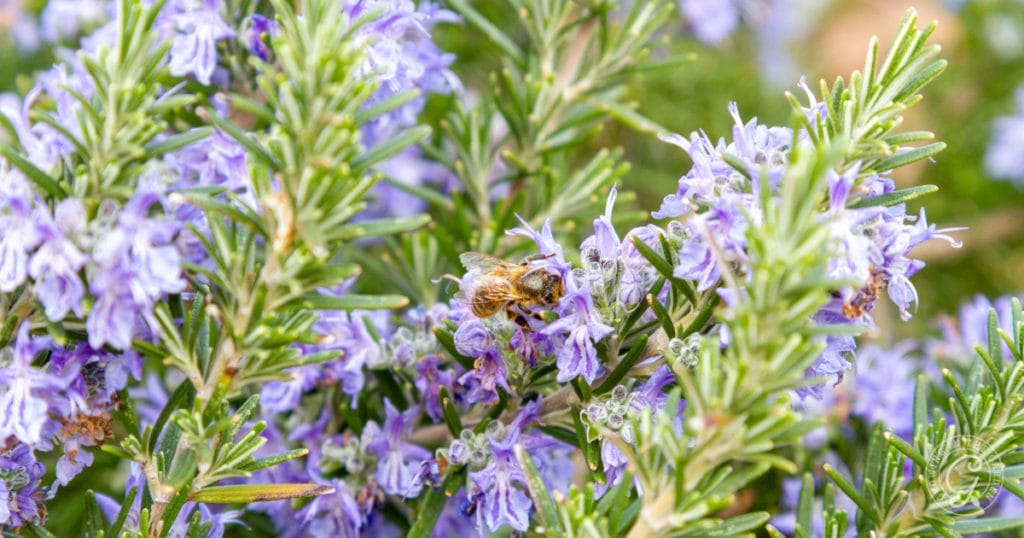
Well-draining soil is essential for rosemary. This means the soil should be able to drain water quickly, preventing the roots from sitting in water for too long. This plant is susceptible to root rot and other moisture-related conditions, which can turn it yellow, wilt, and eventually lead to its demise. Understanding and providing the right soil conditions is key to maintaining a healthy rosemary plant.
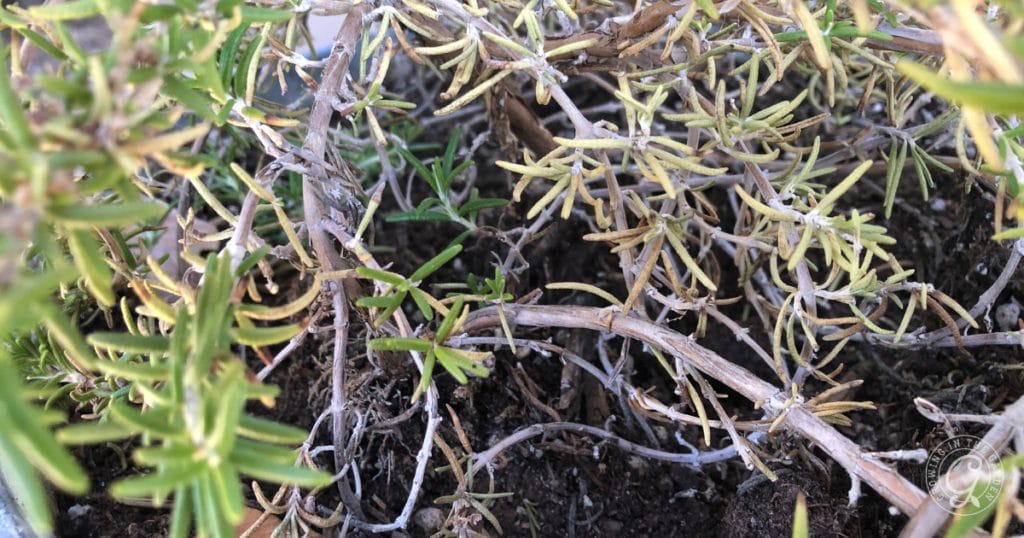
Rosemary thrives in full sun and prefers temperatures between 70-85°F (21-29°C). It tolerates full sun even in Arizona’s low desert.
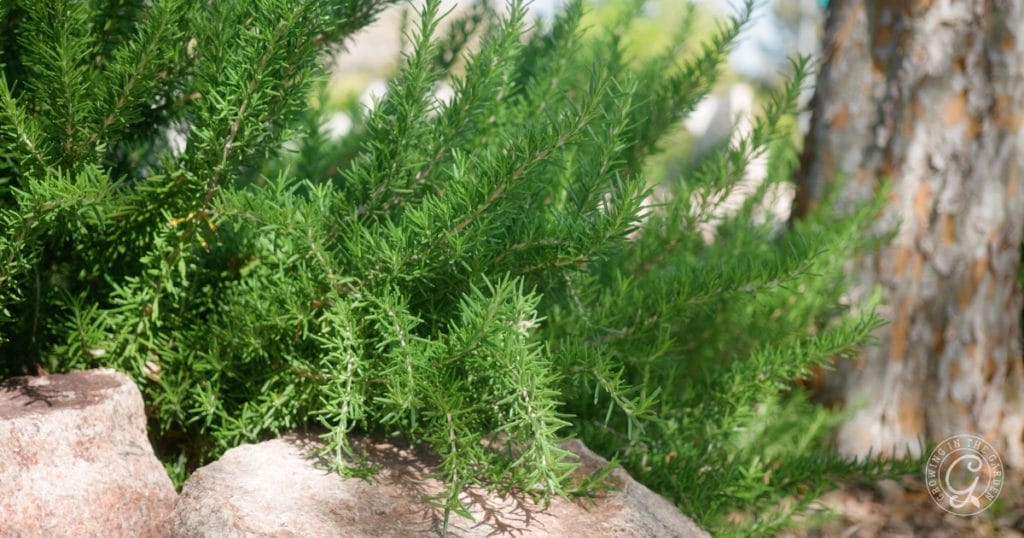
2. Plant from transplant; rosemary is not easily grown from seeds
Growing rosemary from seeds is notoriously tricky. It’s best to plant transplants. When choosing transplants, choose vigorous plants with healthy leaves. Before purchasing, remove the transplant from the container to ensure it is not overgrown or rootbound.
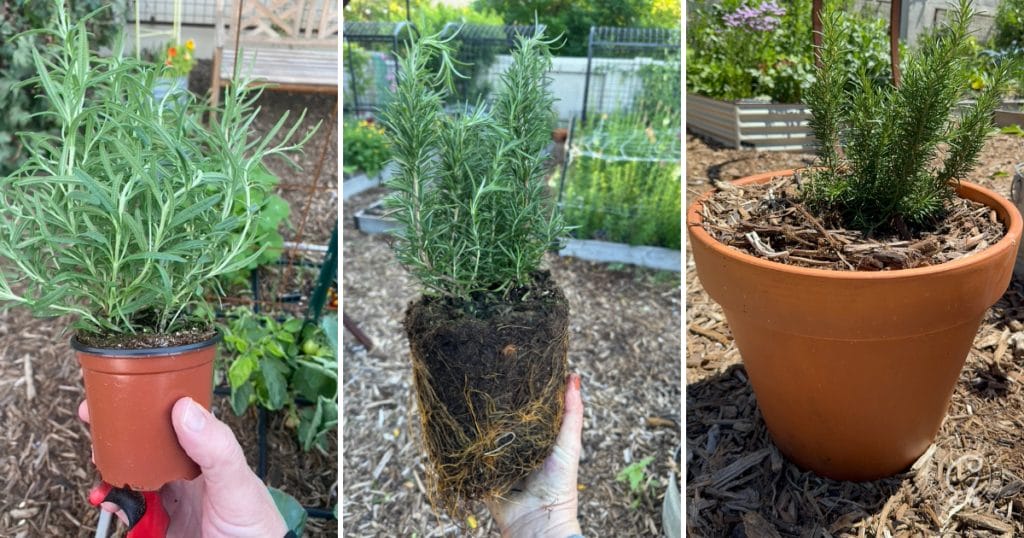
The best time to plant rosemary will vary depending on your location. It is generally recommended to wait until the last frost has passed before planting. Older plants tolerate frost, but young plants like warm soil to help them get established.
Plant rosemary from fall to early spring if you live in a mild winter climate. In the low desert of Arizona, plant rosemary from October to November and from February through April for the best results. Give plants ample time to establish their roots before the summer heat sets in. This low desert planting guide is available in my shop.
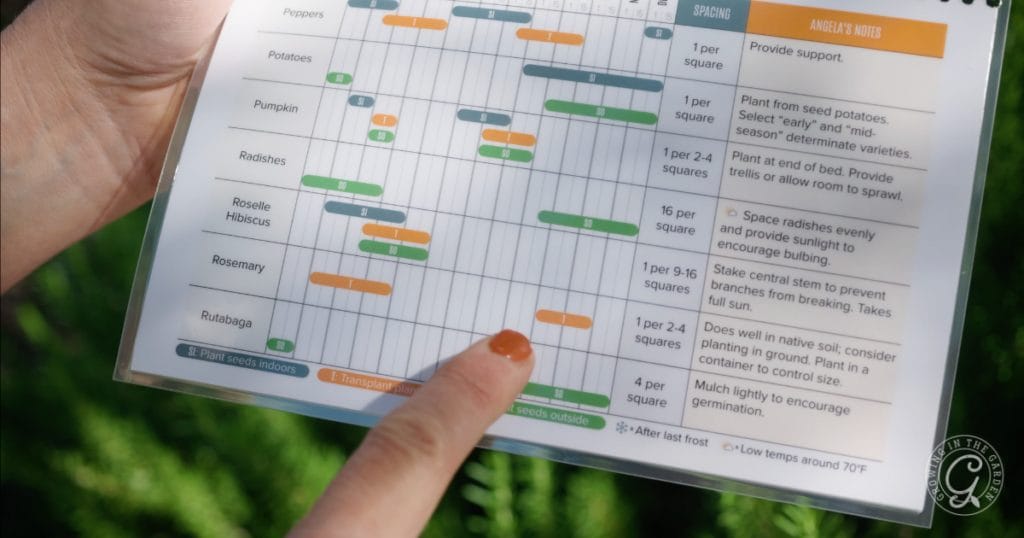
In zones 8 and higher, rosemary is grown as a perennial and can grow large (several feet (1 m) wide and tall ). Give rosemary room to grow.
Live in a humid area? Provide plenty of airflow; don’t crowd (allow 2-4 feet (.6-1.2 m) in every direction), and ensure it has good drainage. In zones 7 and lower, grow in a container and bring it indoors during the winter.
Terra cotta pots are a good choice for growing rosemary in containers. The porous nature of terra cotta allows the plant to dry out between waterings, which helps prevent root rot. Use a cactus or succulent soil mix when growing rosemary in containers.
3. Don’t stress over caring for rosemary
Rosemary thrives on neglect, making it a low-maintenance addition to your garden. Water it often until it establishes, then let it do its thing. Just remember to let the soil dry out between waterings and avoid over-soaking. It’s as simple as that! Read this post, “How to Grow Herbs in Hot Climates,” for more tips about caring for herbs.
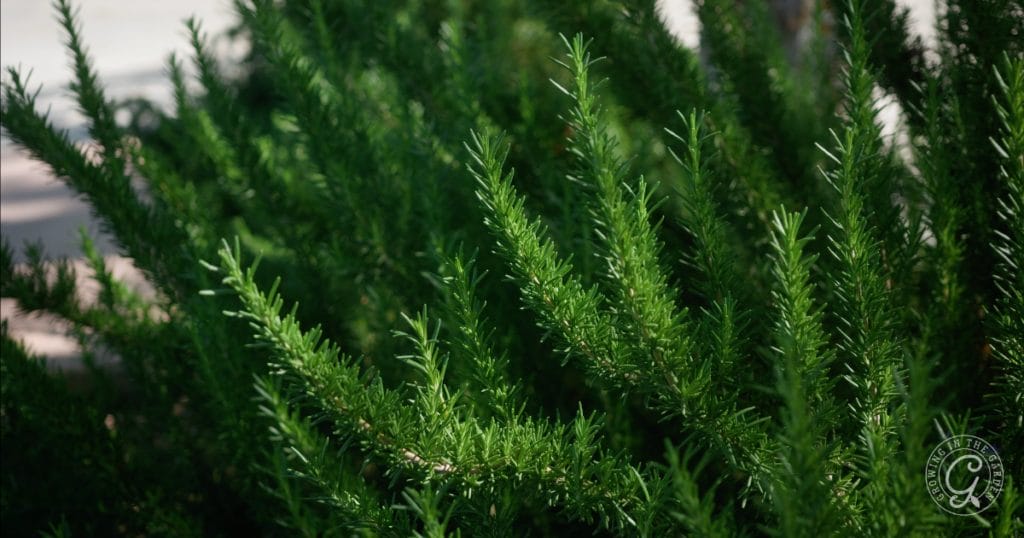
An annual light top dressing of compost or mulch in early spring nourishes the microbial life in the soil. Additional fertilizer is not recommended.
4. Harvest rosemary – but not too much!
It’s best not to prune more than ⅓ of the plant at one time. If desired, prune lightly each spring or fall for shape. This means removing the top few inches of the plant to encourage bushier growth. Cutting back more than that or extensive pruning during the year’s hottest months will stress the plant.
Harvest individual sprigs as needed. Young stems have the freshest flavor. Rosemary flowers have a more subtle flavor than the leaves but are edible and make a beautiful garnish.
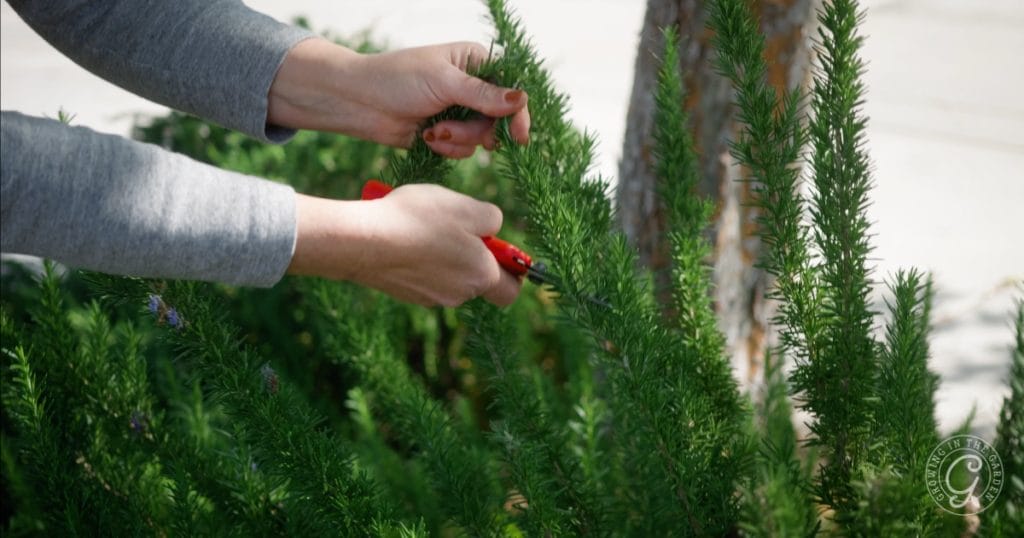
If you can grow rosemary year-round, use it fresh; there is no need to preserve it. Young stems have the most flavor. I rarely preserve it. However, you can preserve it by drying, freeze-drying, or freezing.

Strip rosemary leaves before drying and storing. To strip leaves from the stem, hold the tip and pull it upward through pinched fingers or a grater.
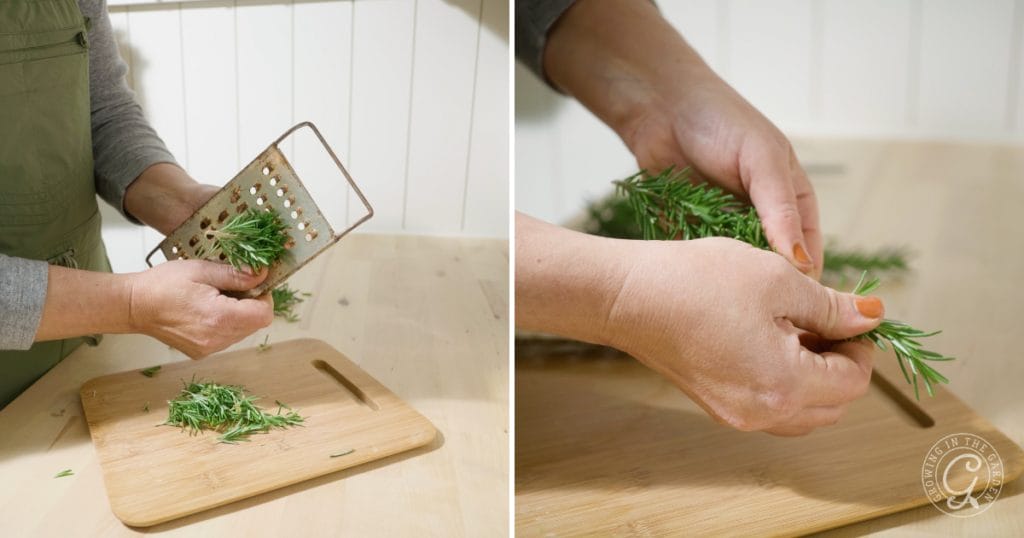
5. Propagate unlimited rosemary from cuttings
Unlock the potential of unlimited rosemary with propagation. It’s a breeze to propagate in late winter or early spring.
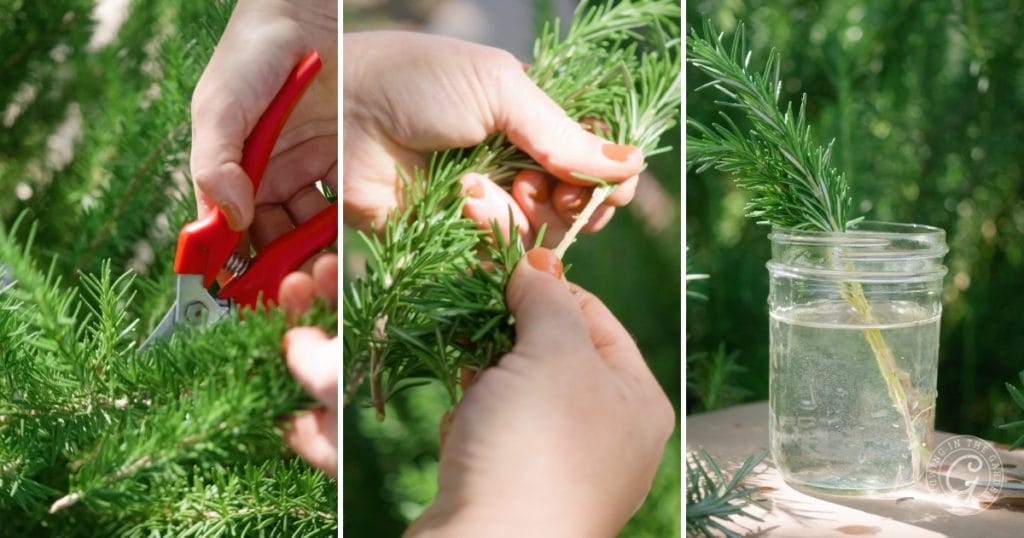
Choose young shoots that aren’t flowering and are 6-8 inches long. Remove the bottom half of the leaves and root in water. Change the water every few days to keep the environment oxygenated and prevent rotting.
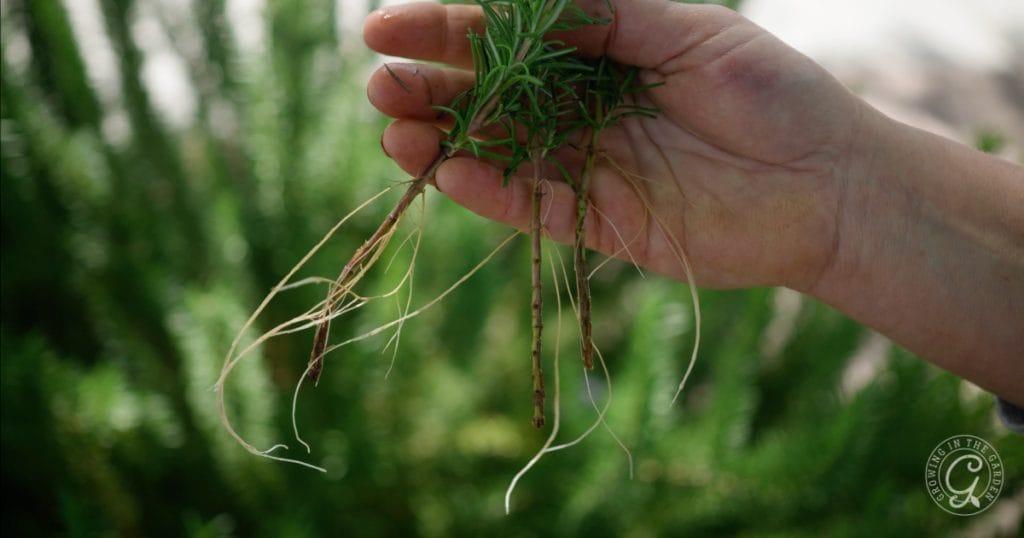
After a few weeks, you should notice root hairs forming in the water. Pot up the rooted cuttings when several roots are an inch or more long. It’s an exciting process and fun to grow new plants.
To learn about other herbs that thrive in hot climates, read this post, “10 Perennial Herbs for Hot Summer Climates“.
Get planting dates for your favorite crops with these visual planting guides for vegetables, herbs, fruits, flowers & vines.
If this post about how to grow rosemary was helpful, please share it:
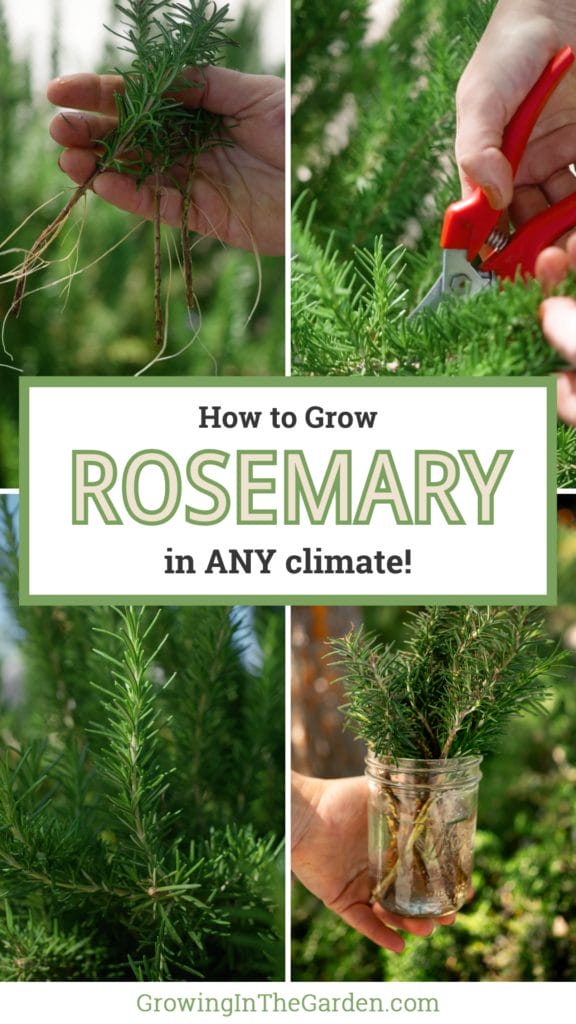
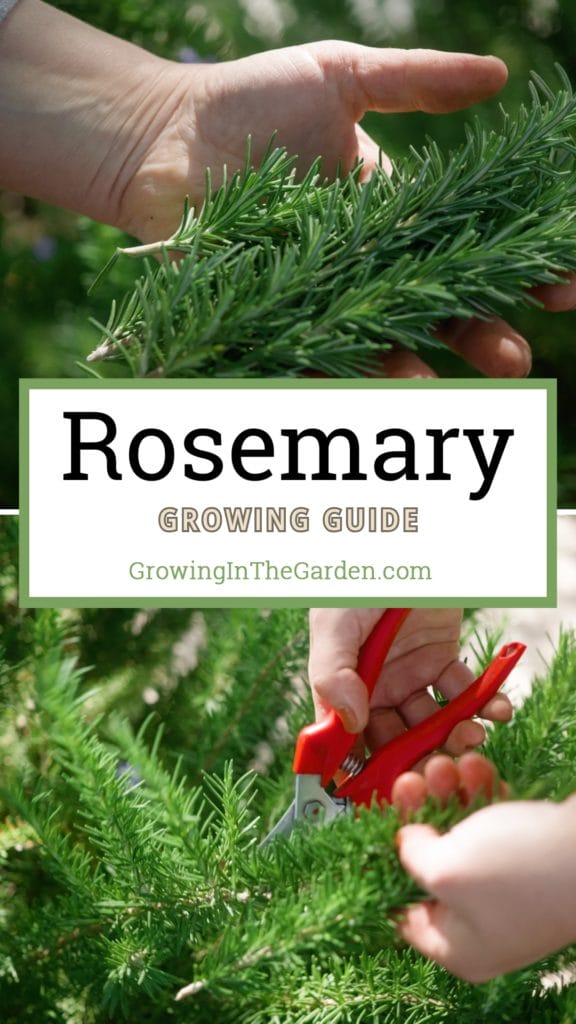
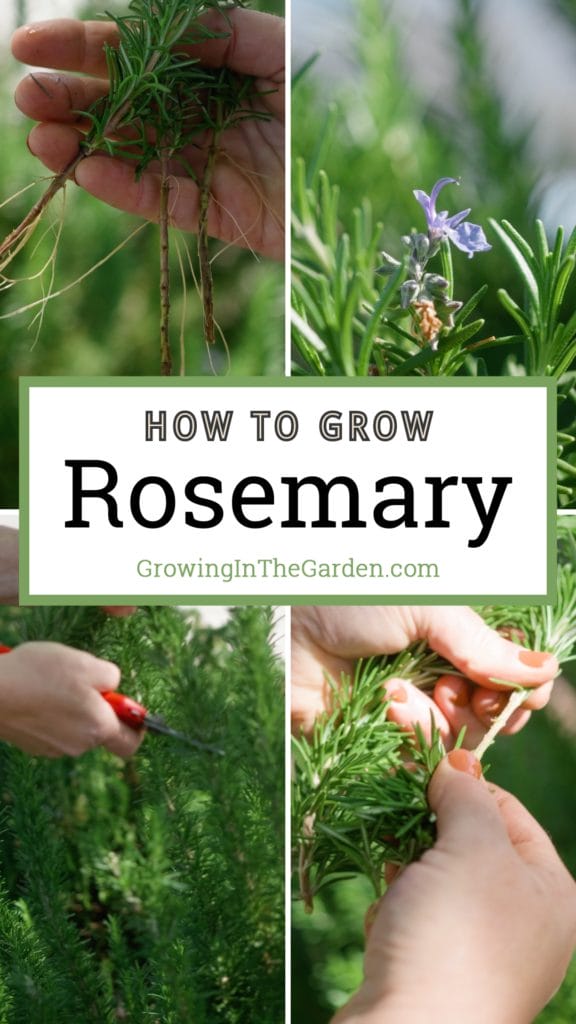


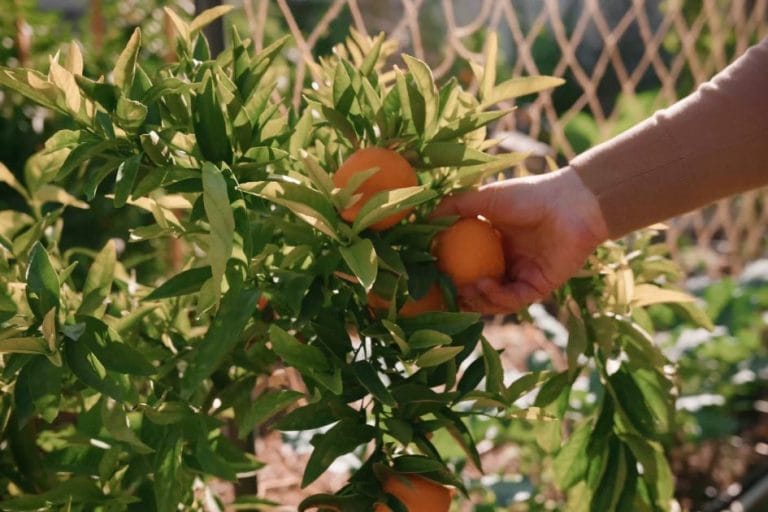
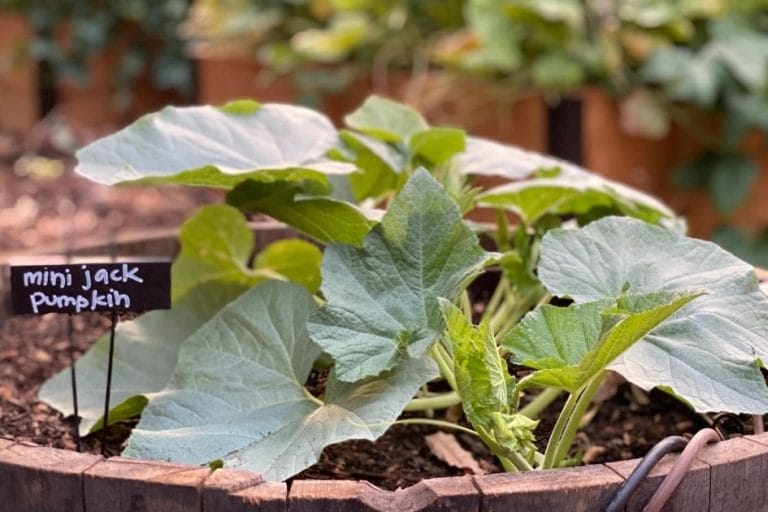
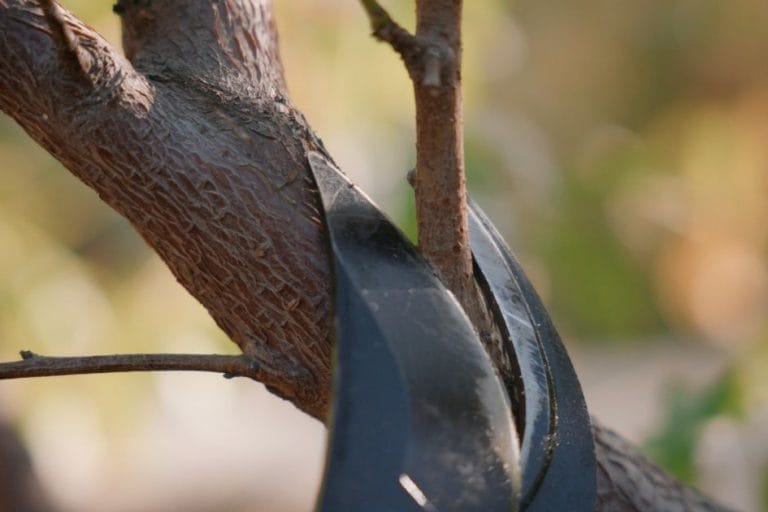

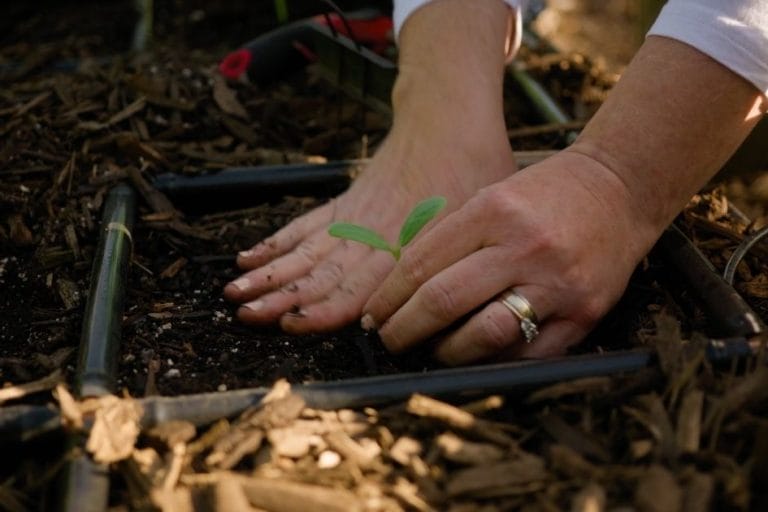
I’m in Arizona zone 10a. Are there different types of rosemary? Is one better than the other for my hot dry area?
The main differences are trailing/creeping or upright. Either of those varieties grow well in hot dry areas.